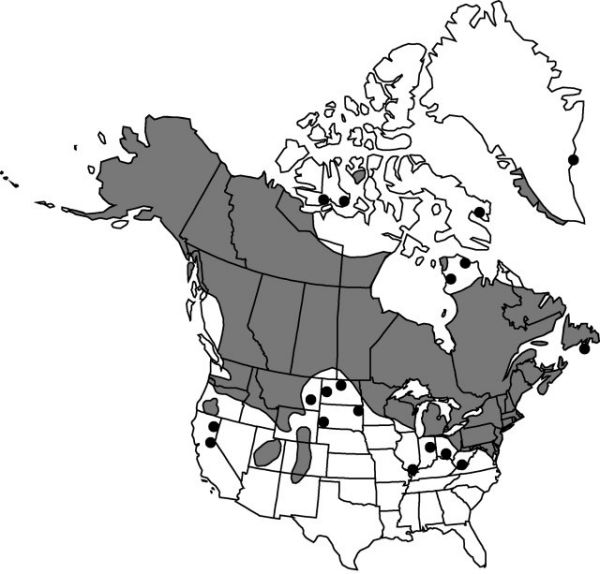Difference between revisions of "Corallorhiza trifida"
Specim. Inaug. Corallorhiza, 8. 1760.
FNA>Volume Importer |
imported>Volume Importer |
||
| (One intermediate revision by the same user not shown) | |||
| Line 79: | Line 79: | ||
|publication year=1760 | |publication year=1760 | ||
|special status= | |special status= | ||
| − | |source xml=https:// | + | |source xml=https://bitbucket.org/aafc-mbb/fna-data-curation/src/2e0870ddd59836b60bcf96646a41e87ea5a5943a/coarse_grained_fna_xml/V26/V26_1306.xml |
|subfamily=Orchidaceae subfam. Epidendroideae | |subfamily=Orchidaceae subfam. Epidendroideae | ||
|tribe=Orchidaceae tribe Cymbidieae | |tribe=Orchidaceae tribe Cymbidieae | ||
Latest revision as of 21:12, 5 November 2020
Stems ± strongly thickened, base not bulbous. Inflorescences: racemes lax to dense, 8–35 × 1–3 cm. Flowers 3–18, inconspicuous; perianth open; sepals spreading, yellowish to green, lanceolate, 1-veined, 3.5–7 mm; lateral sepals often strongly recurved; petals arching over and clasping column, light yellow-green, often spotted with purple, lanceolate, 1-veined, 3–5.5 mm; lip white, often purple spotted, 2.5–4 × 1.5–3 mm, thin, with 2 small lateral lobes or teeth, middle lobe oblong, often somewhat dilated near apex, with 2 distinct basal lamellae; column curved toward lip, yellowish green, sometimes spotted purple basally, with shallow adaxial channel, 2–3.3 mm; ovary 2.1–6.5 mm; mentum inconspicuous. Capsules ellipsoid, 4.5–15 × 4.3–6 mm. 2n = 42.
Phenology: Flowering spring–summer.
Habitat: Coniferous, deciduous, and mixed woods, swamps, mountain woods, upland habitats northward, restricted to cool, moist habitats southward
Elevation: 0–3100 m
Distribution

Greenland, St. Pierre and Miquelon, Alta., B.C., Man., N.B., Nfld. and Labr., N.W.T., N.S., Nunavut, Ont., P.E.I., Que., Sask., Yukon, Alaska, Calif., Colo., Conn., Del., D.C., Idaho, Ill., Ind., Maine, Md., Mass., Mich., Minn., Mont., N.H., N.J., N.Mex., N.Y., N.Dak., Ohio, Oreg., Pa., R.I., S.Dak., Utah, Vt., Wash., W.Va., Wis., Wyo., Eurasia.
Discussion
Corallorhiza trifida is largely autogamous, although a syrphid fly (Syrphus cinctellus) was reported as a pollinator by F. Silen (1906). Various floral morphs exist, some with weak geographic correlation; they do not appear to warrant taxonomic recognition. Variants of C. odontorhiza, C. wisteriana, and C. maculata without red and purple pigments in sepals and petals are occasionally misidentified as C. trifida.
Selected References
None.
